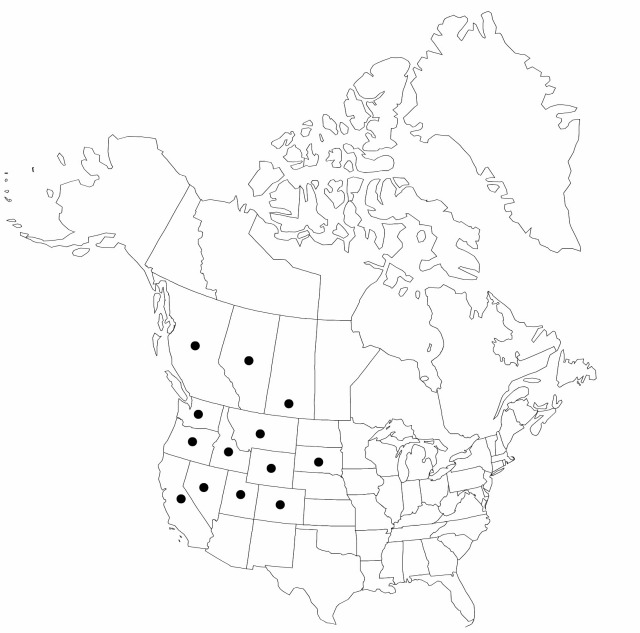Carex hoodii
in W. J. Hooker, Fl. Bor.-Amer. 2: 211, plate 211. 1839.
Plants without conspicuous rhizomes. Culms 20–80 cm, 1.7–2 mm wide basally, 0.6–0.9 mm wide distally. Leaves: sheaths tight, green, fronts hyaline; ligules less than 3 mm, wider than to as wide as long; widest leaf-blades 1–3.5 mm wide. Inflorescences capitate, with 4–8 spikes, individual spikes difficult to distinguish, 0.8–2 cm × 6–15 mm; proximal bracts to 1.5 cm; spikes with 5–10 ascending or spreading perigynia. Pistillate scales brown with green midvein, ovate, 3.8–4.3 × 1.3–2.2 mm, body as long as and slightly narrower than to as wide as perigynium, apex acute to short-awned. Anthers 1.5–2.2 mm. Perigynia dark-brown with green margins, veinless or obscurely veined abaxially, 3.2–5 × 1.4–2.5 mm, margins serrulate distally; beak 0.7–1.5 mm, apical teeth 0.2–0.6 mm. Achenes suborbiculate, 1.7–2.1 × 1.7–1.8 mm. 2n = 58, 60.
Phenology: Fruiting late spring–mid summer.
Habitat: Dry to mesic grasslands, rocky slopes, screes, forest openings
Elevation: 0–3500 m
Distribution

Alta., B.C., Sask., Yukon, Alaska, Calif., Colo., Idaho, Mont., Nev., Oreg., S.Dak., Utah, Wash., Wyo.
Discussion
Selected References
None.
Lower Taxa
"shortened" is not a number."slightly narrower" is not a number.
